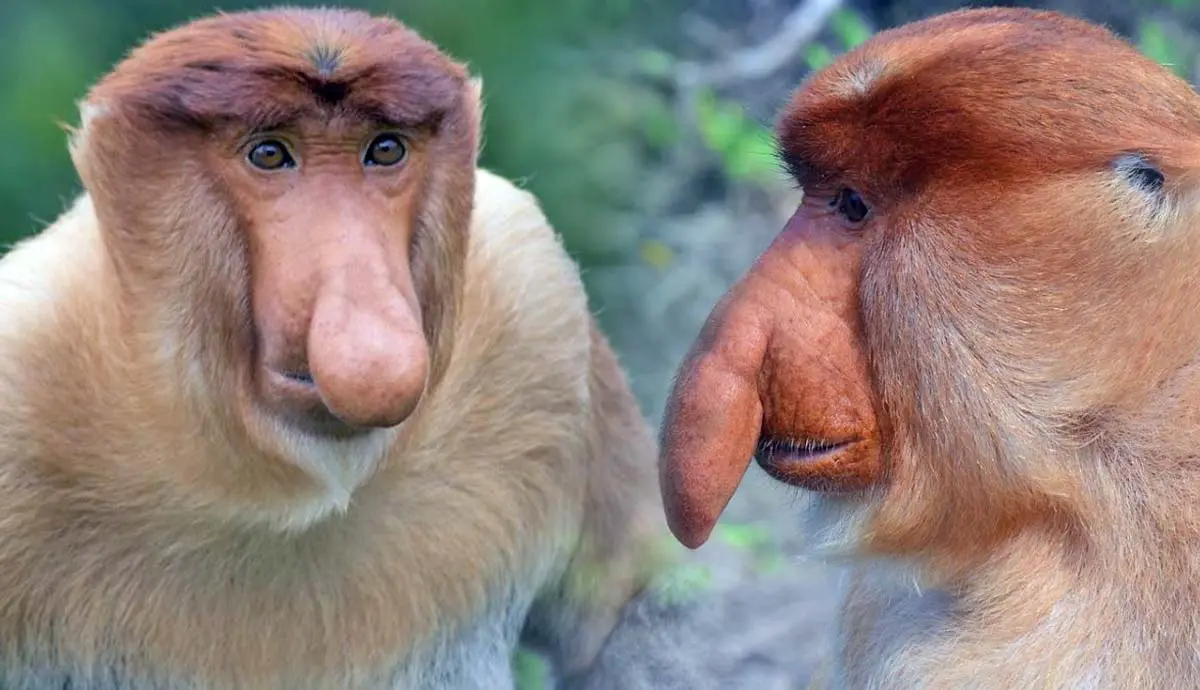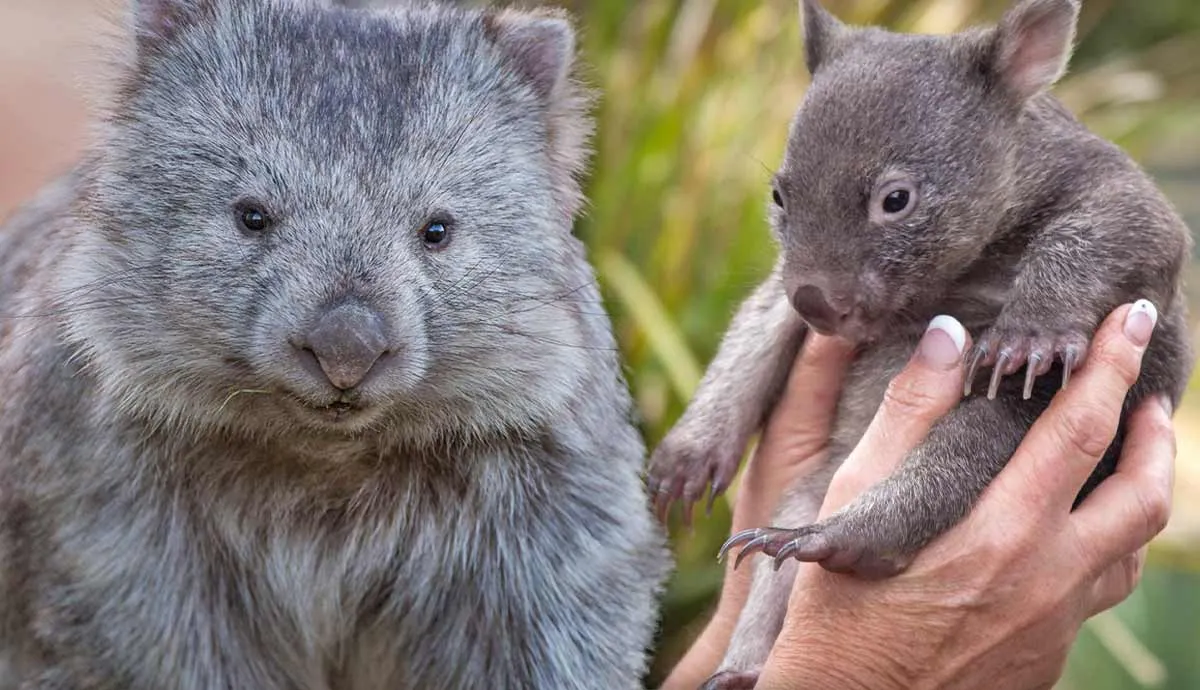If you’ve ever seen pictures of a monkey with a comically large nose, you’ve seen a proboscis monkey. These fascinating monkeys not only look different but act a bit differently than some of their monkey cousins.
There are many interesting facts to learn about proboscis monkeys, so let’s check out this prodigious primate.
What do Proboscis Monkeys Look Like?

The word proboscis refers to any long, flexible snout. Often, people use this word to refer to an elephant’s trunk or a large human nose. Male proboscis monkeys sport a large, flaccid, and bulbous nose to attract mates. When they make a call, the sound resonates through the nose. The more resonant the sound and larger the nose, the more likely the male is to attract mates. Females have smaller noses that are slightly upturned.
Both sexes are red-brown on their backs, arms, and tops of their heads. Their undersides are a pale tan. They have long tails that are about as long as the body at about 22-28 inches. They weigh between 22-44 pounds.
Where do Proboscis Monkeys Live?
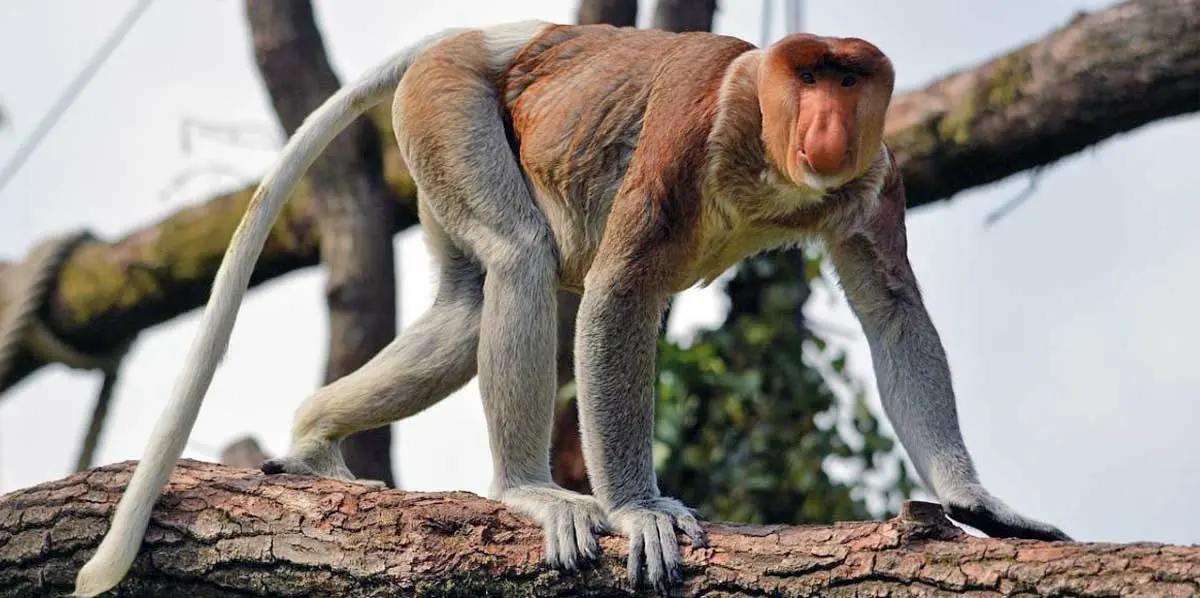
Proboscis monkeys are endemic to Borneo. They live in Brunei, Indonesia, and Malaysia, and their habitats are mostly mangrove forests. They prefer to dwell next to the coast, but occasionally you can see them further inland near rivers, estuaries, swampland, and lowland rainforests.
These monkeys’ habitats are threatened by humans because the places they prefer to live are like places we live. They prefer to live within a kilometer of water. They even sleep by the water, resting in trees. They live much of their lives in trees: resting, feeding, and traveling.
Yet, these monkeys are great swimmers. They have webbed feet that help them to outswim even skilled swimmers like crocodiles. They also wade in water standing upright.
What do Proboscis Monkeys Eat?
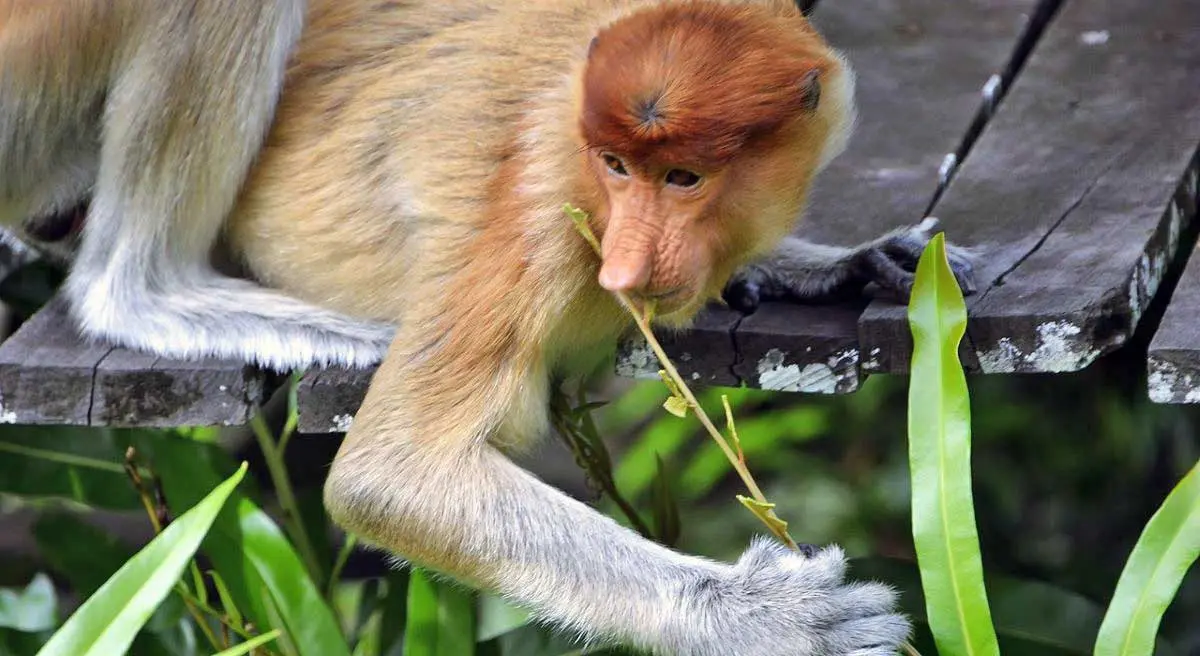
These monkeys are herbivores, eating mainly fruit and leaves. They also eat flowers, insects, bark, and seeds. They have large bellies made to break down leaf matter. Inside their tummies, they have sacculated chambers with cellulose-digesting bacteria, perfect for digesting difficult-to-eat leaves through fermentation.
Since they have highly-specialized digestive systems, they must be careful about what they eat. Foods high in sugar, such as pulpy fruits, can cause bloating, which can lead to death.
This makes it hard to keep proboscis monkeys in zoos. An improper diet can lead to liver and blood disorders, obstructions in the intestines, and lead to death.
How do Proboscis Monkeys Act Together?
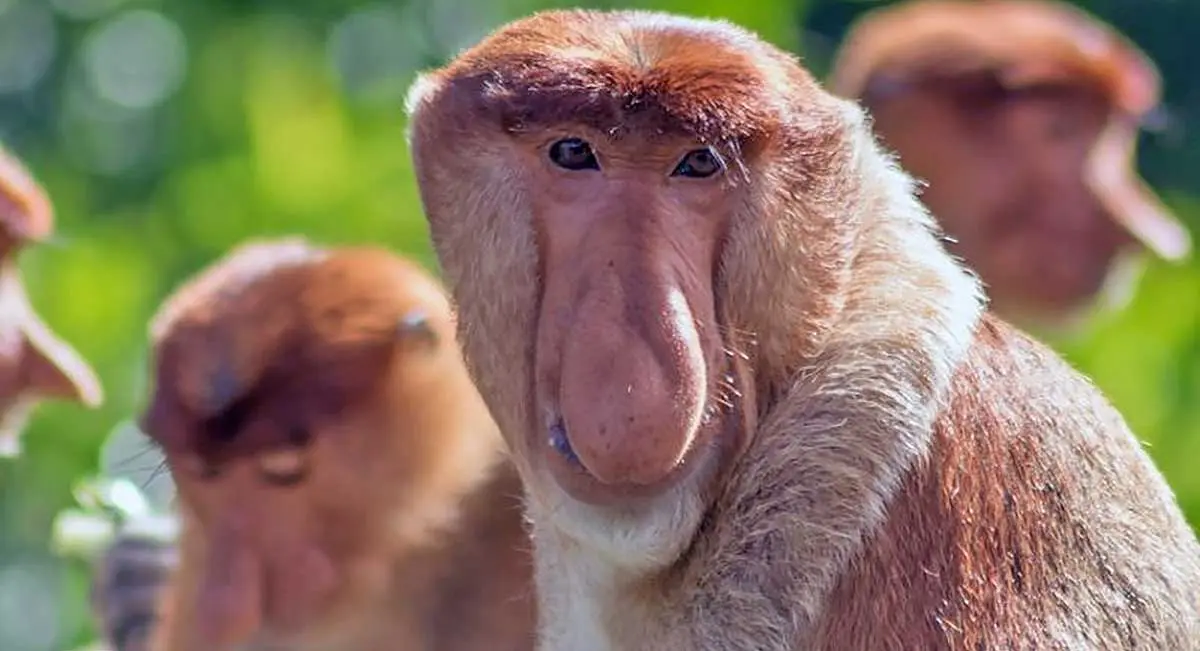
These long-nosed monkeys are social animals. They live in family groups of about 20, called troops. In these groups, there is a single male, a dozen females, and their young.
There are also separate groups of bachelor monkeys, where males group. As males reach adulthood, they join these groups to live with other males until they are old enough and strong enough to create their family group.
Females may switch between groups throughout their lifetimes. This can be to avoid inbreeding, reduce feeding competition, or increase her status.
Grooming is a bonding experience usually between a female and an infant. Proboscis monkeys can also play together.
A couple of groups may join, which helps them to reduce predation while they travel together. However, the groups remain distinct. Separate groups usually spend most of the morning foraging and feeding. Then, they get together in the evening to play, communicate, and feed with other nearby groups. Different group members do not play together or groom each other.
What do Proboscis Monkeys Sound Like?
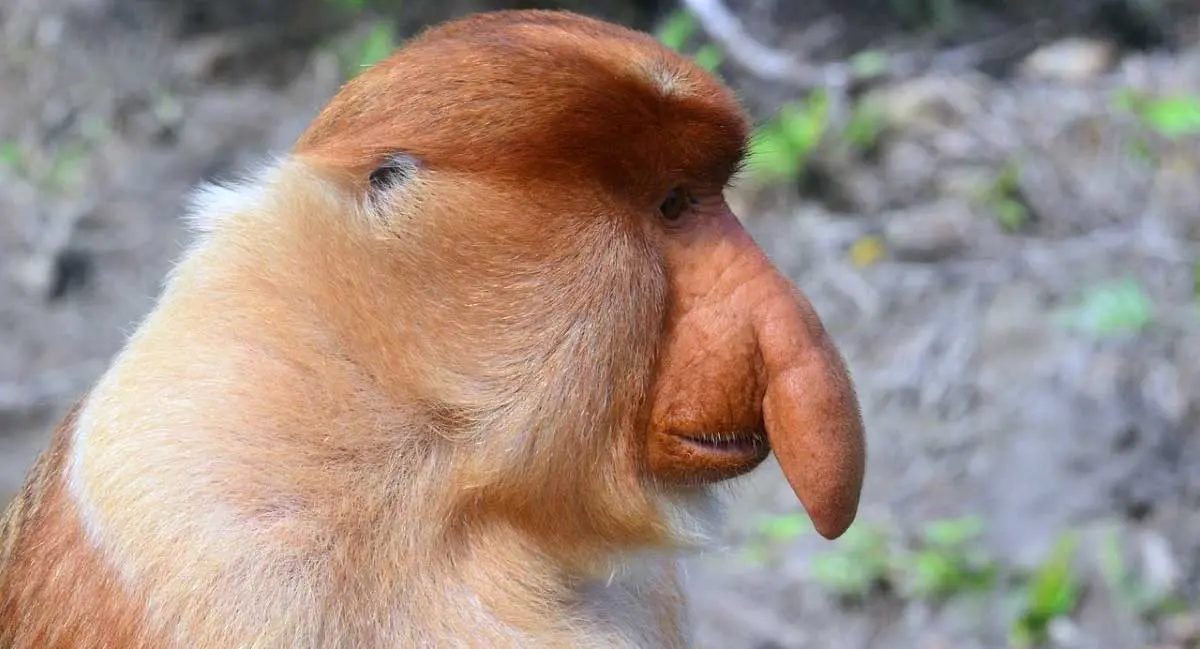
These social primates communicate with a variety of sounds, aided by the shape of their nose. Males often honk at one another to communicate dominance and social status. Males also make alarm calls to alert their groups to danger. Females use a characteristic call when they are angry. These large monkeys also use roars and howls to communicate with other members of their group.
They also have several non-verbal forms of communication. They bare teeth to establish territories and assert dominance. They shake tree branches as a warning. These intelligent creatures know how to get their message across to both predators and their group members.
Conclusion
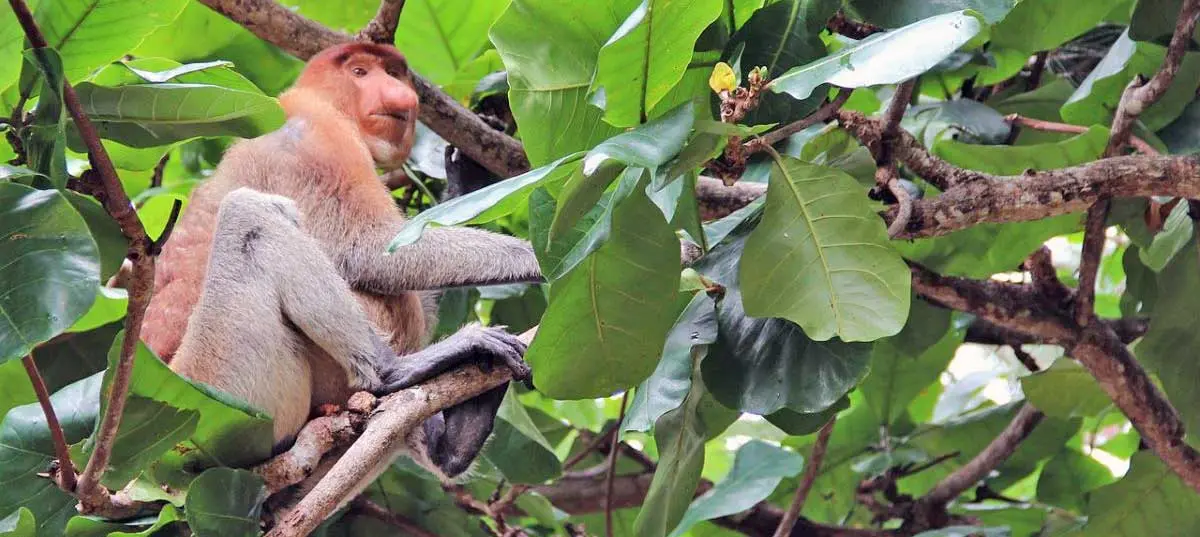
In 2015, the IUCN classified this unique species of monkey as endangered. In the last 40 years, proboscis monkeys have seen a decrease in numbers due to loss of habitat, fire, and illegal hunting and trading. Since they don’t do well in captivity, it is essential to protect their natural habitats from deforestation to keep this beautiful species alive.
There are several conservation efforts underway by sanctuaries in Borneo, but there is still a lot of work that needs to be done to protect this endangered monkey species.
